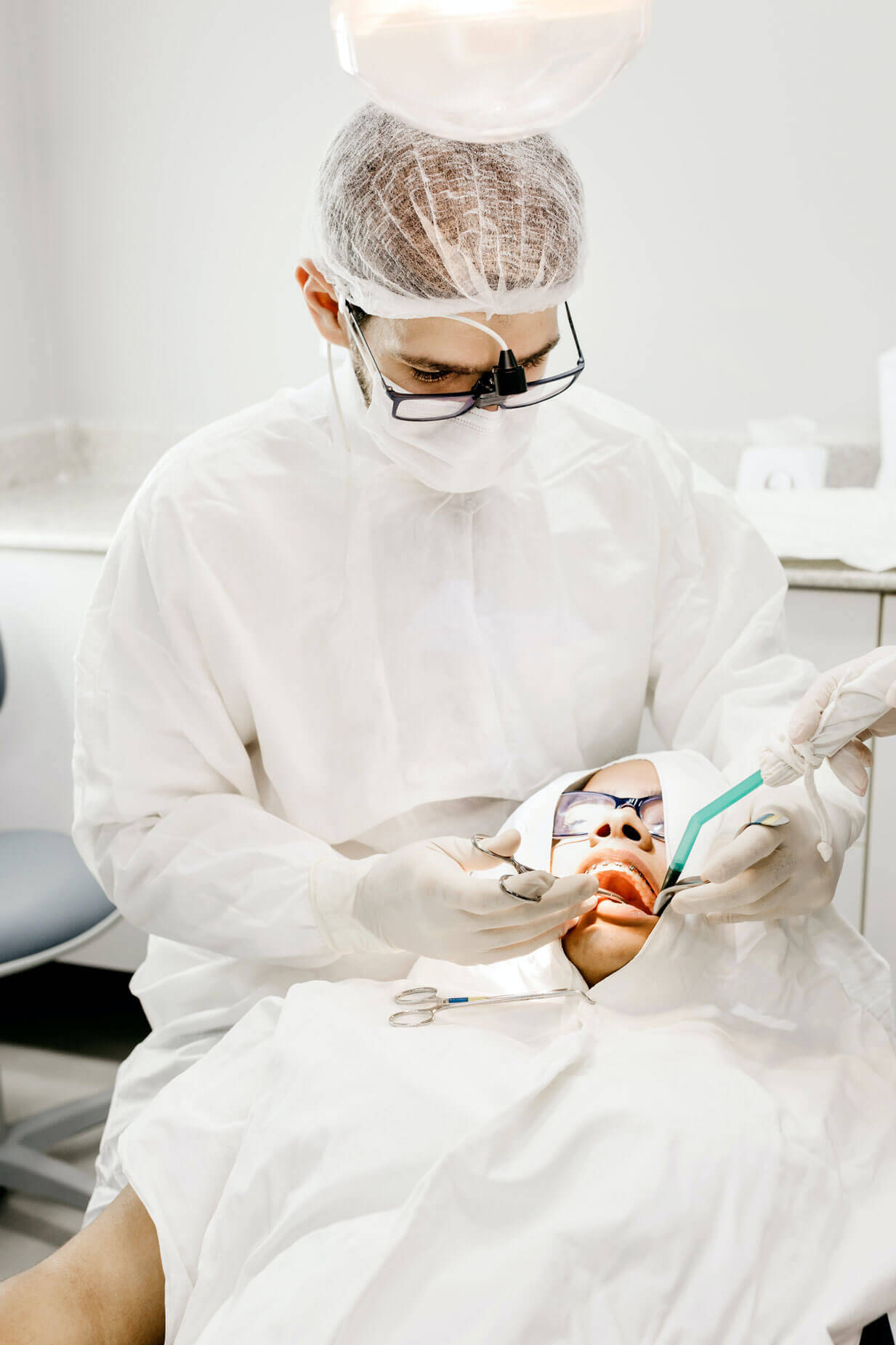
Best Practices for Crown Procedures in Children
Jessica DiCerbo, BSN, DMD, joined us for an interview to discuss ways to help children feel comfortable in the dental chair, especially during crown prep and placement.
What is the name of your practice and where are you located?
Our practice is called Coastal Kids Pediatric Dentistry. We have two locations, one in Southern Delaware in Rehoboth Beach and one in Seaford. I have been a pediatric dentist for about 13 years.
What made you decide to become a pediatric dentist?
I really love pediatric dentistry because we have the opportunity to impact people at a young age to have a better perception of going to the dentist. We provide a positive experience and recognize each child’s different abilities and what they are able to do, then meet them where they are and lift them up to do more and more.
What age ranges are your patients generally?
We see kids aged 1-16 and newborns sometimes, if they have natal teeth.
What would you like our readers to know about you?
I personally think it’s important to take children to a board-certified pediatric dentist. Or at least make sure that the dentist is a pediatric dentist. We do rely on our general dentist partners to help treat children, but if they need something special, they should see a pediatric dentist. I was also a nurse in a children’s hospital previously in my career, and therefore bring a different bedside/chairside manner as a result.
What advice do you give parents preparing their child for their first crown appointment?
For a crown appointment, we usually discuss everything at a recall visit. We think less preparation is sometimes better. Sometimes it is better to be more general. They might not know exactly how a pediatric dentist does a crown on a child, so we “Tell. Show. Do.” We show the child and the parents the actual crown, let them touch it, and show them how we will do the procedure. We do this with many of the basic activities we do—let them touch our mirror, the toothbrush, handpieces, and the suction, etc. We show them what it feels like on their finger and then on their tooth.
We reassure the child that, just like they have very good cleaning visits and other appointments, trying something new like a crown will also be a good experience. In this meeting we also talk about nitrous oxide, if the child will need to go to sleep for treatment, or if they are able to tolerate getting their tooth numbed.

How do you recommend promoting a positive attitude about dentistry?
That is typically pretty easy, especially with Cheng Crowns since they are beautiful, and parents love them. They can’t wait to have the cavities treated and their child’s smile restored with a crown. So, I feel it is pretty easy to encourage a positive attitude toward restorations with Cheng Crowns.
I recently had a personal experience at the local community hospital where we have children go who need to be asleep during treatment. After one of the nurses’ children was treated, she sought me out a week later to tell me how beautiful her daughter’s smile is and that she loved the Cheng Crowns zirconia crowns we used to restore her child’s smile. Her other daughter had a different brand of crown from a different dentist placed previously, and she said the Cheng Crowns looked so much better.
People are always asking, “Can we have the white crowns?” When I show them a sample, they are really excited to see how beautiful they are.
What are some ways dentists can personalize the experience for children to make them feel comfortable?
We ask a lot of questions on our intake forms—like hobbies and what the kids like to do. Then we tailor our conversations to what the kids like. Being familiar with their likes opens them up and personalizes the experience. We use their name a lot so that they feel recognized and like we know them. Know what they like, use their name, be kind to them, and validate their feelings, even when they are scared, and I think they will really start to trust you.
What are some of the best practices you have for communicating with parents and children about the crown placement procedure?
One question parents often ask is “Why put a crown on the tooth?” Usually, adults have fillings first before getting a crown. It is very helpful to take the time to explain some of the reasonings, like the anatomy of the teeth, tooth strength, esthetics, and the timing of exfoliation. When you break it down for them and explain the timing, it makes sense to them. If you don’t take the time to explain these two factors or explain it even if they don’t ask, they will walk out thinking they don’t have to do it. But the baby teeth will not fall out as soon as they think, they are often there much longer. If they don’t restore them with these beautiful crowns, they will eventually look worse or perhaps even get infected.

What pharmacological and nonpharmacological options are appropriate for behavior management during dental procedures?
Our basic pharmacological interventions are nitrous oxide and oxygen (laughing gas), or general anesthesia. Non-pharmacological approaches include having both parents or just one in the room if necessary, letting the child choose a movie to watch and hold the remote control, which makes them really happy. Take time to both tell them and show them how easy it is. Give positive reinforcement once treatment is completed. And of course, have lots of toys!
What other distraction or desensitization techniques do you use to help with fear or anxiety?
Our distraction techniques include little games. One we call the “wiggle game.” We ask them to “Wiggle your fingers and wiggle your toes while we count to 10 and see if you can win the wiggle game” while we give them the anesthesia and sometimes, they don’t even notice they received a shot.
How do you assess whether children are in pain during treatment?
Children think in black and white—it hurts, or it doesn’t. Sometimes we communicate using thumbs up, thumbs to the side, or thumbs down. Then they don’t face the complexities of explaining how they feel with words, especially if they are not feeling great and don’t want to talk. No matter what language they speak, this is a universal check-in on how they are feeling.
How important is documenting a child’s behavior during appointments and why is it helpful?
It is super helpful. We rely on that. For every appointment, we always look back on previous appointments for the child’s behavior during their last cleaning, filling, or crown. We use a standard scale, like the Frankel scale, and add notes specific to the child. What worked? Counting and the wiggle game? Did the nitrous have a good effect?
Under what circumstances would you defer treatment to another dentist or specialist?
Sometimes we’ll defer treatment for medical reasons. If they’re getting their tonsils or adenoids out, that should be taken care of before they can have general anesthesia with us. We also may refer to another dentist, such as my peers at Children’s Hospital of Philadelphia or Alfred I. DuPont in Wilmington if the child’s medical history is complex but they still need general anesthesia.
What should the patient and parents expect and do after a crown procedure?
Expect to have a beautiful smile afterwards and be super happy! I don’t find that children have a lot of discomfort or that it takes a lot of time for healing. I always stress brushing the area and keeping the gingiva clean. This is the #1 predictor of comfort after the procedure.
Why does your practice choose to use Cheng Crowns? How long have you been using them?
I’ve been using Cheng Crowns since my residency— since 2007. I think that the fabrication of the crowns is the best—top notch compared to all the other competitors out there. They have stellar customer service and offer personalized attention to their clients. They are so friendly and easy to work with. I also like to support local businesses, especially when I know they have wonderful customer service and a great product.
I love the Cheng Crowns and I love the Cheng family. When we go to dental conferences, we always visit the Cheng Crowns booth and make sure we get our picture taken with the family every year.

Jessica DiCerbo, BSN, DMD
Diplomate, American Board of Pediatric Dentistry
Dr. DiCerbo was born and raised in Philadelphia, Pennsylvania. She earned a Bachelor of Science degree in nursing from Widener University School of Nursing. She spent 5 years as an operating room nurse before beginning her dental education at the University of Pennsylvania School of Dental Medicine. After earning her Doctor of Dental Medicine, Dr. DiCerbo chose to dedicate her career to the dental needs of children and completed a Pediatric Dental Residency at Children’s Hospital of Philadelphia.
As a specialist in pediatric dentistry, Dr. DiCerbo appreciates the focus on each individual, rather than on a procedure. Her highly specialized training allows her to treat infants and children, and children with mental, emotional, and physical disabilities, as well as complex medical diagnoses.
It is important to Dr. DiCerbo to offer her patients state-of-the- art technology and services. As a board-certified pediatric dentist, she meets the rigorous requirements set by the American Board of Pediatric Dentistry. This includes building on the foundations learned in school by reinforcing her expertise in preventive care, the growth and development of children, and the newest techniques in restoring primary teeth, sedation, hospital dentistry, and dental emergencies.
Outside of the office Dr. DiCerbo loves to spend her free time with her husband, Vince, and her two sons, Jacob and Jeremy. Dr. DiCerbo also finds great satisfaction in giving back to the community. During her pediatric dental residency, she participated and recruited volunteers for a homeless health initiative. Now, Dr. DiCerbo speaks at local schools about the importance of oral health and volunteers for Give Kids a Smile, an organization where uninsured local children receive dental treatment.